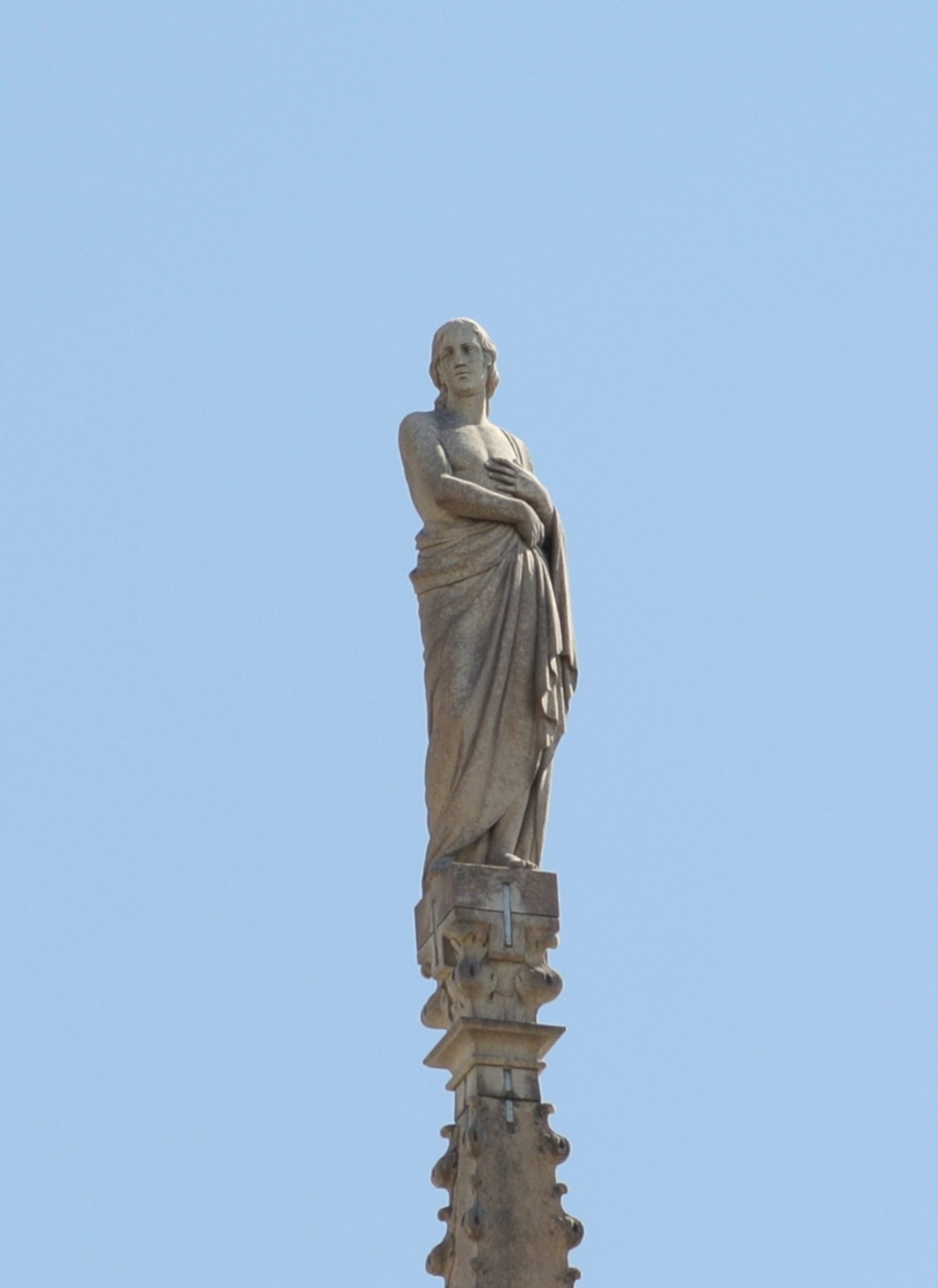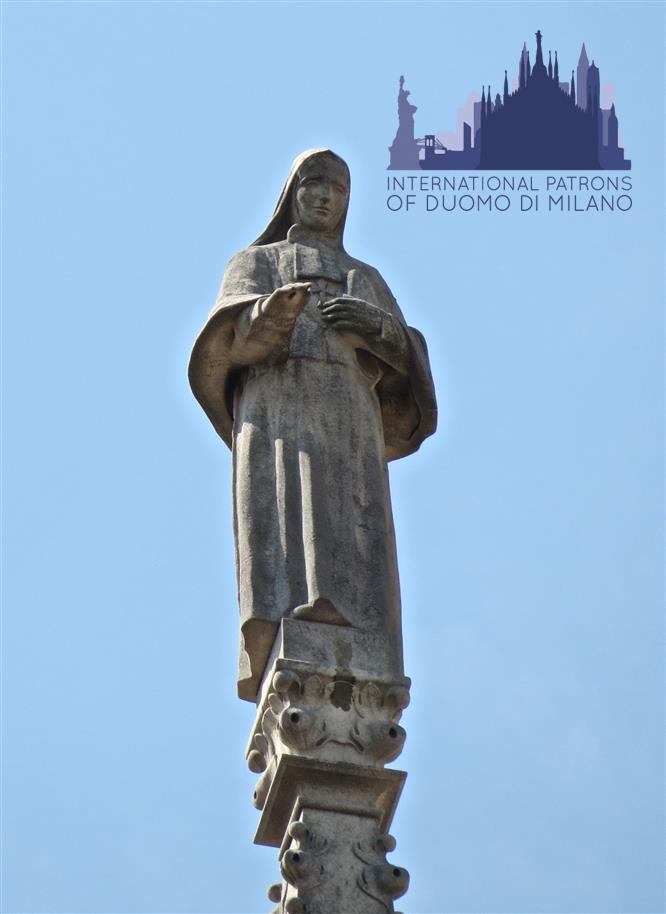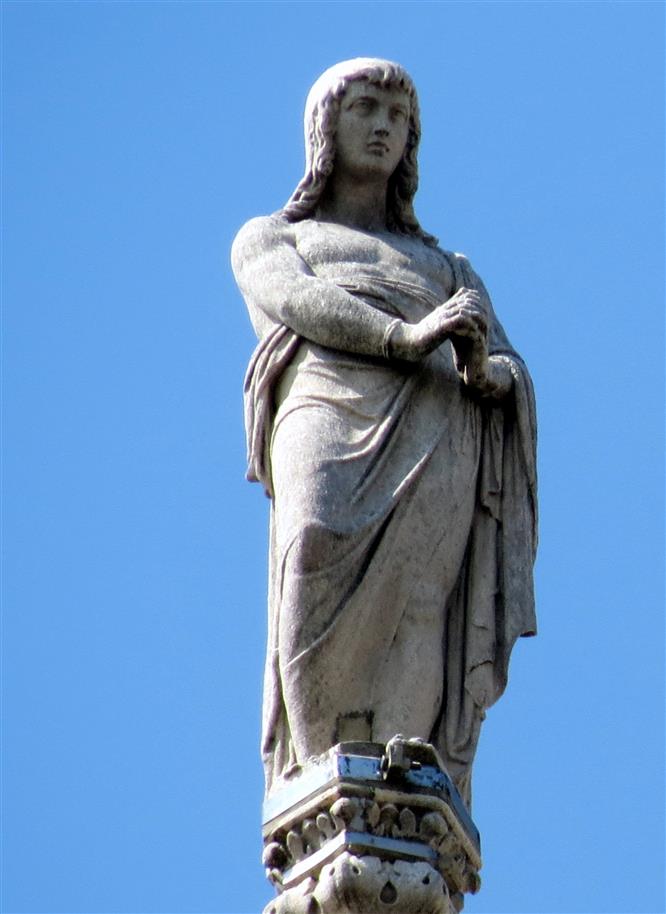Achilleus is remembered together with his companion Nereus, and the first news about the two came from the epigraph written by Pope Saint Damasus in the 4th century, which was later destroyed but passed down by pilgrims. This text describes Achilleus as a soldier very obedient to the orders of the tyrant, who one day converted and decided to abandon his weapons. The tomb of Achilleus and Nereus was found empty in 1874; their tomb consisted of a family tomb inside the cemetery of Domitilla, as it was later named, in Rome.
Tales of the statue in Dome’s building site:
There is not much information about the statue that today rests on Spire G96. We know that it is a reproduction from 1966, but the name of the person who sculpted it is unknown, nor is there any information about the original statue. We only know that the latter dates back to 1813 and stood on the top of Spire G87 until 1939. There is the possibility that it was involved in the bombings of the Second World War, and for this reason a copy was made.
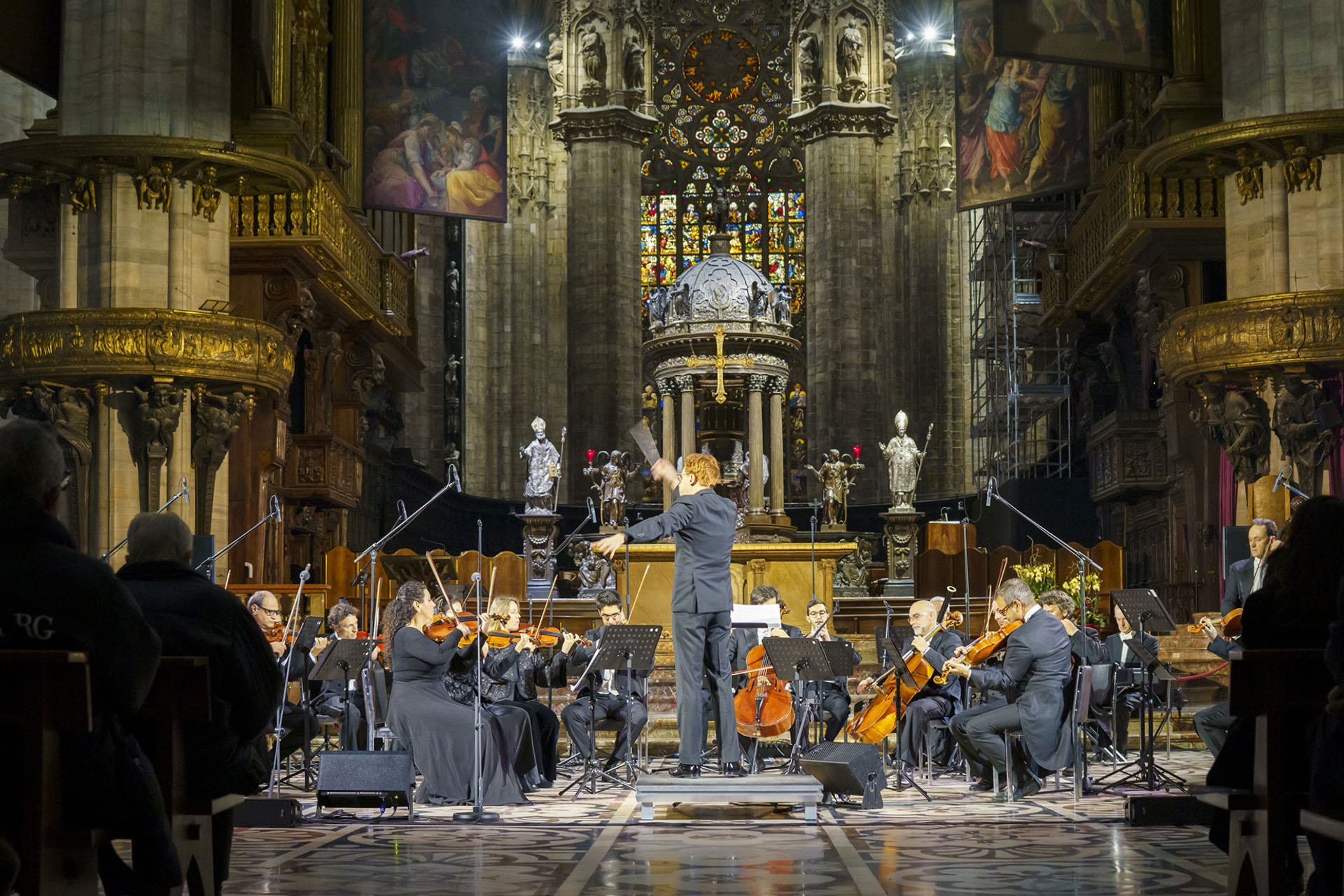
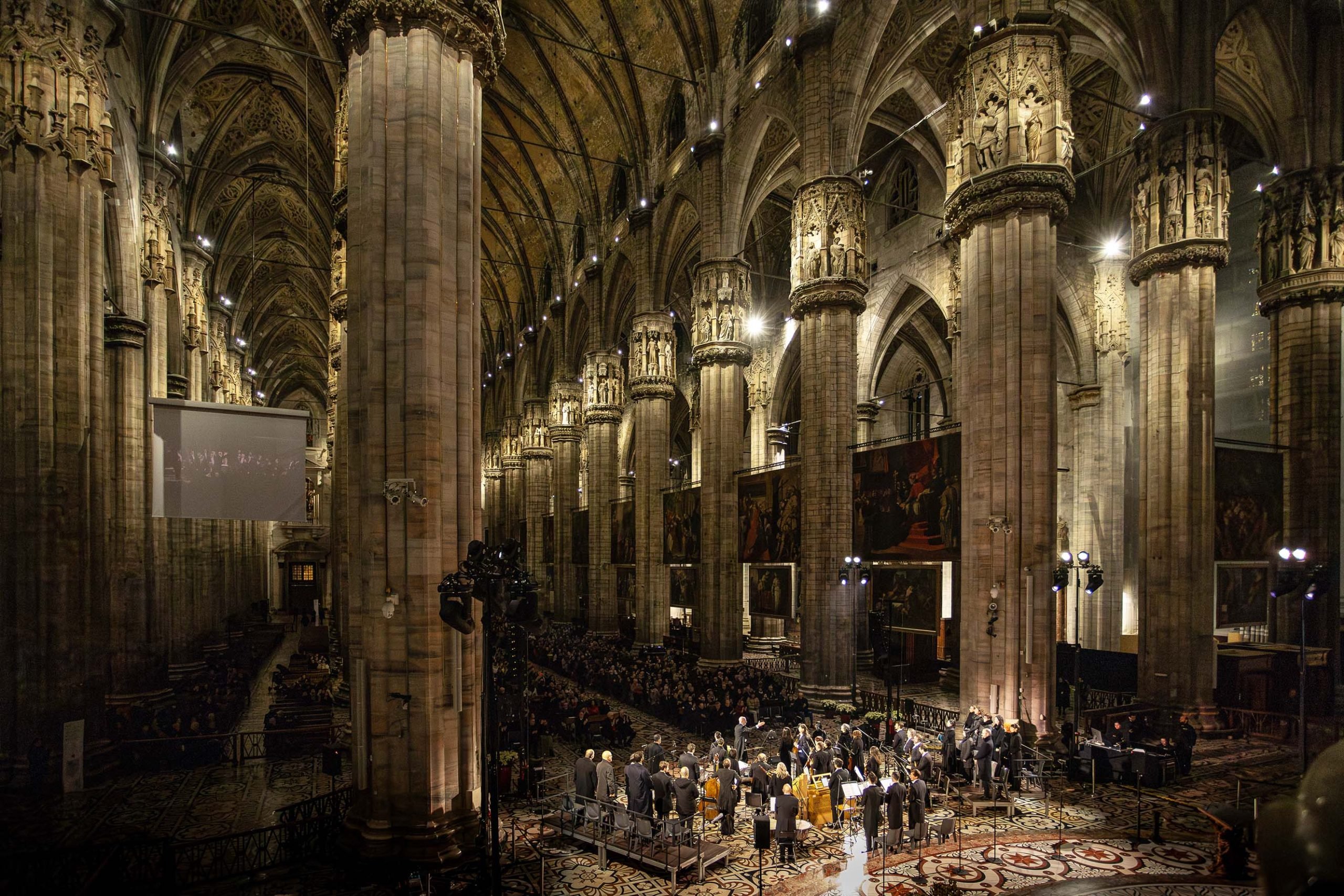
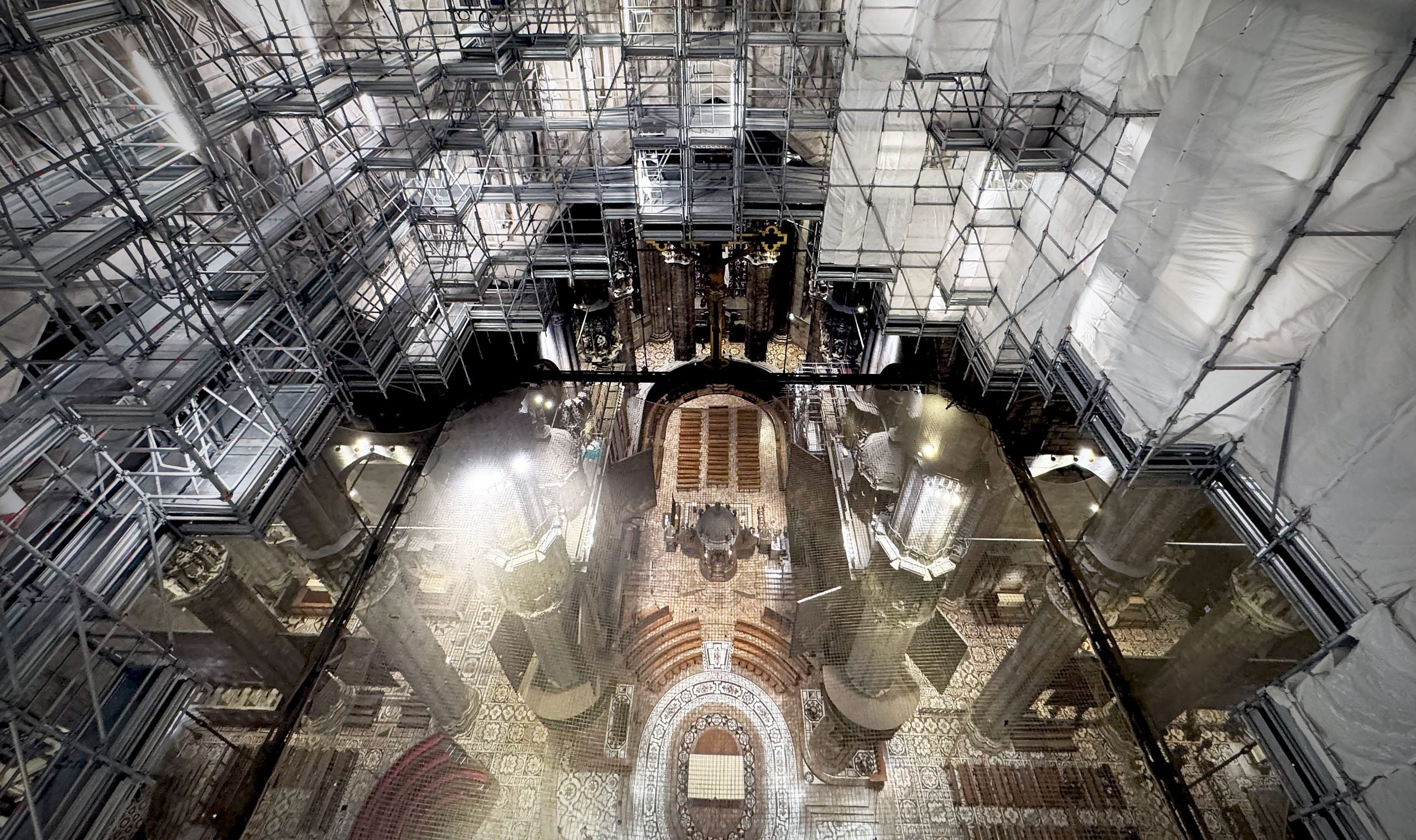
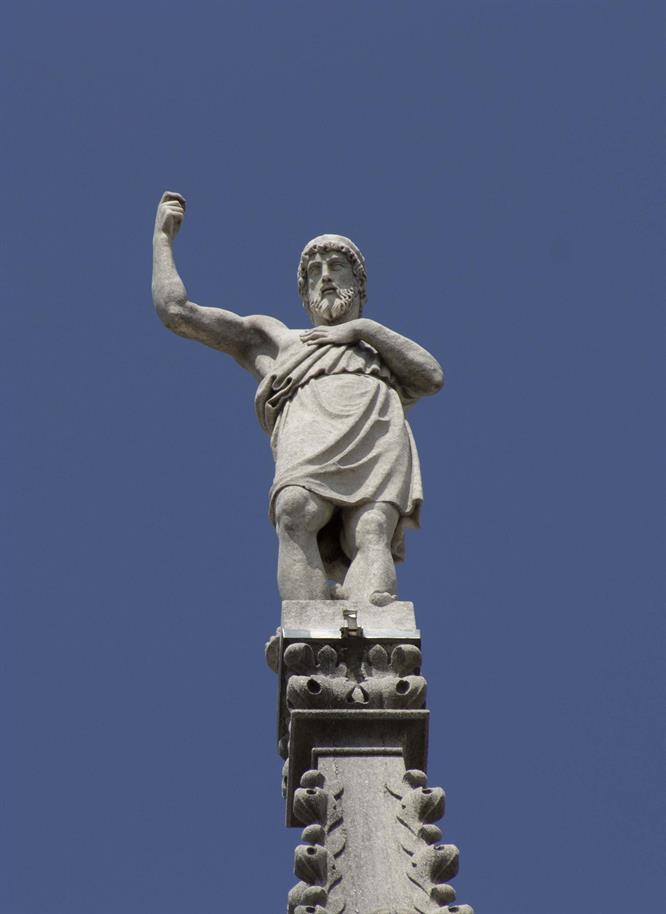
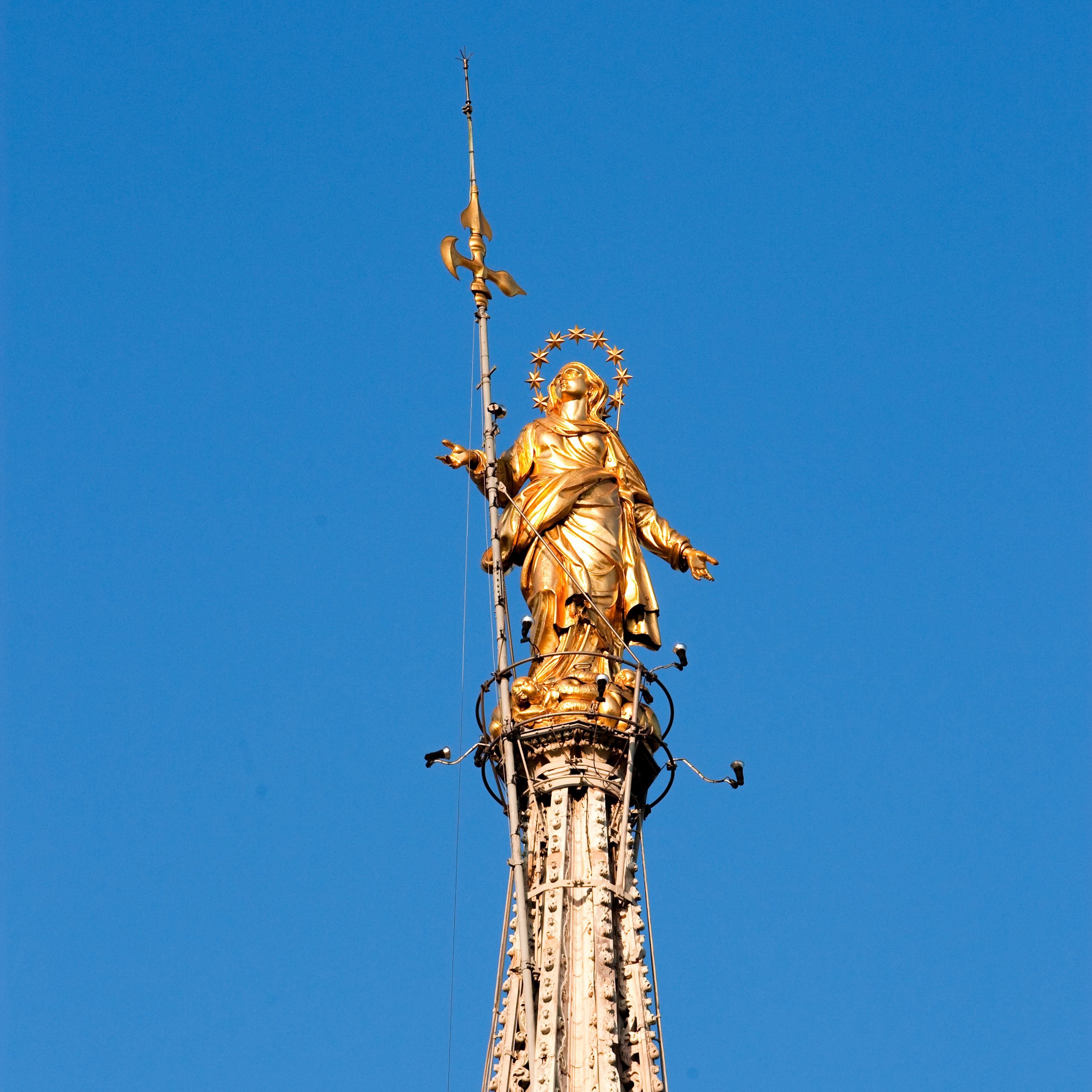
 Tiburio
Tiburio